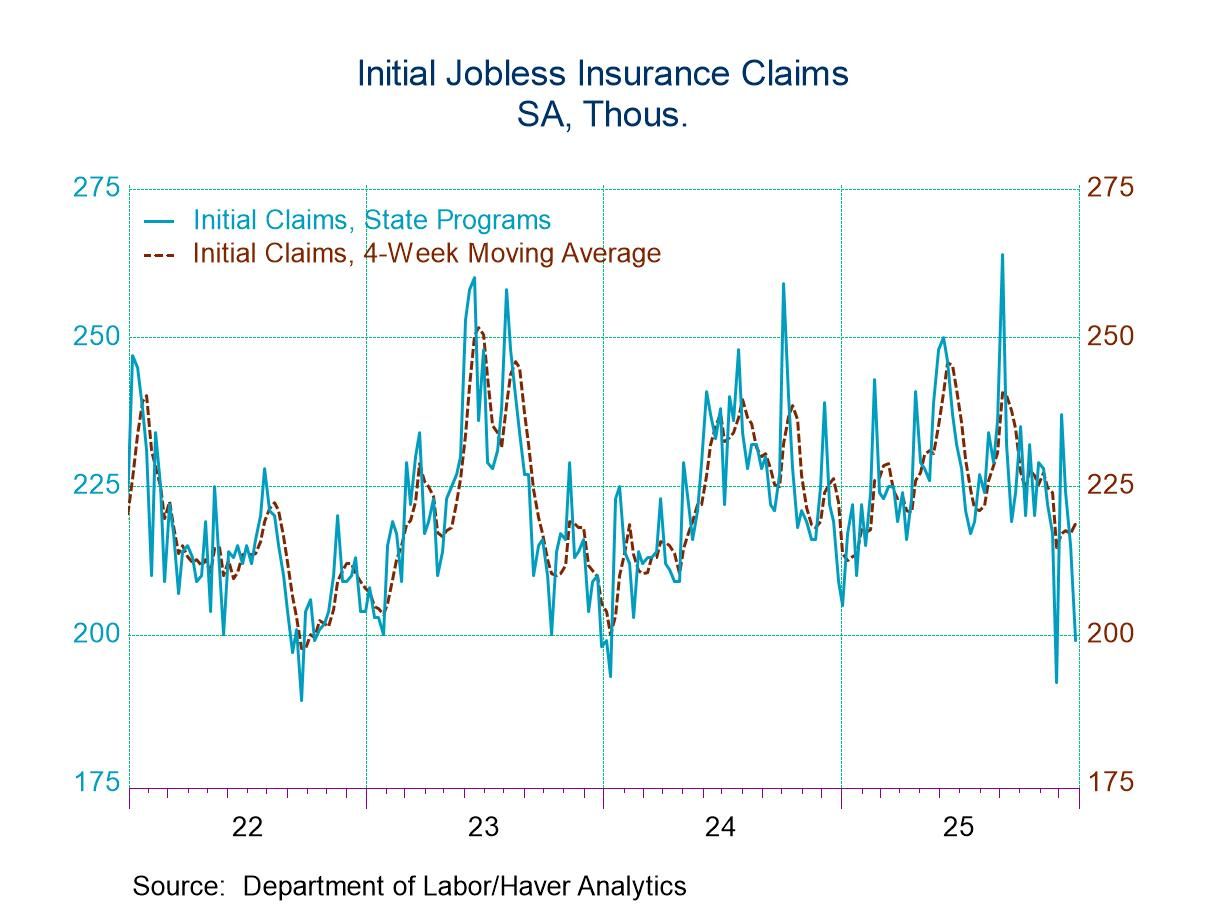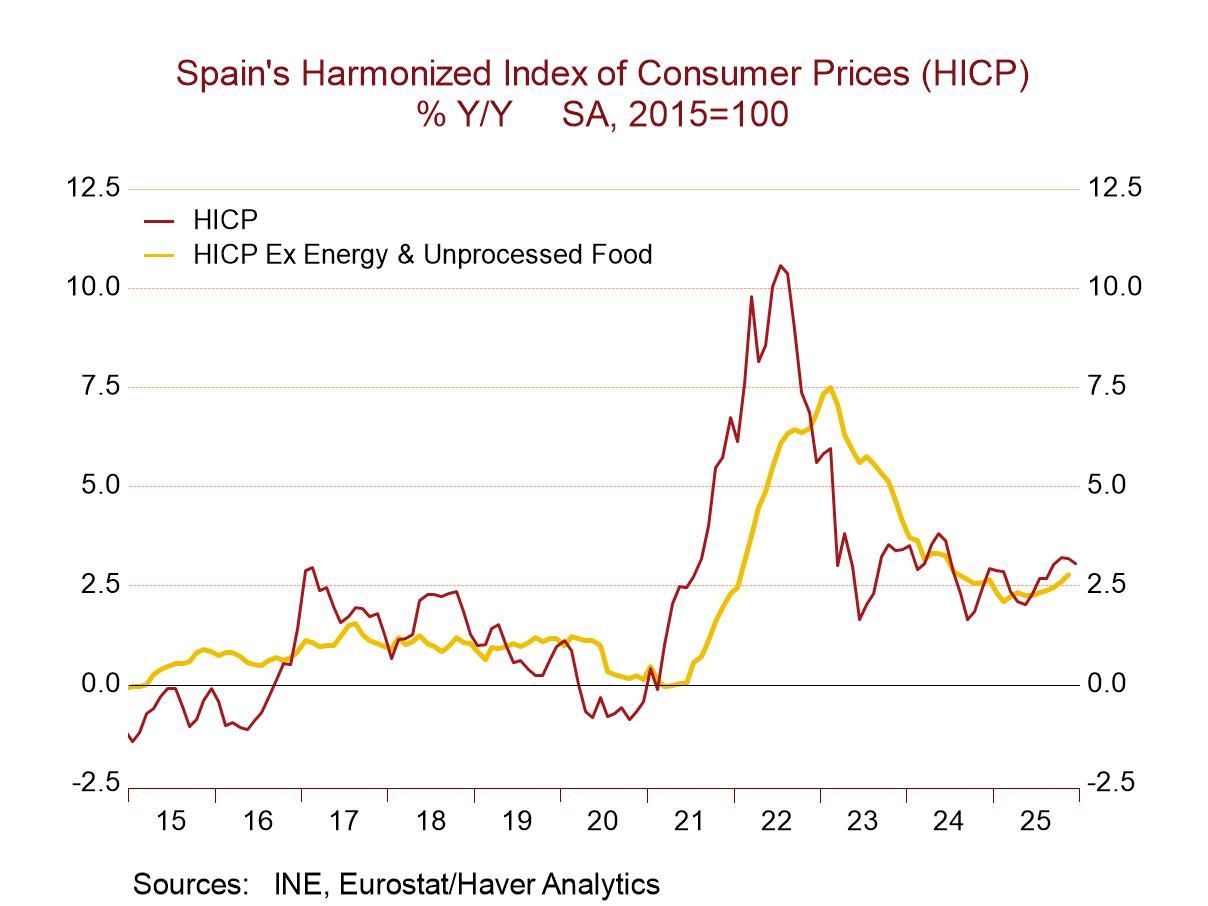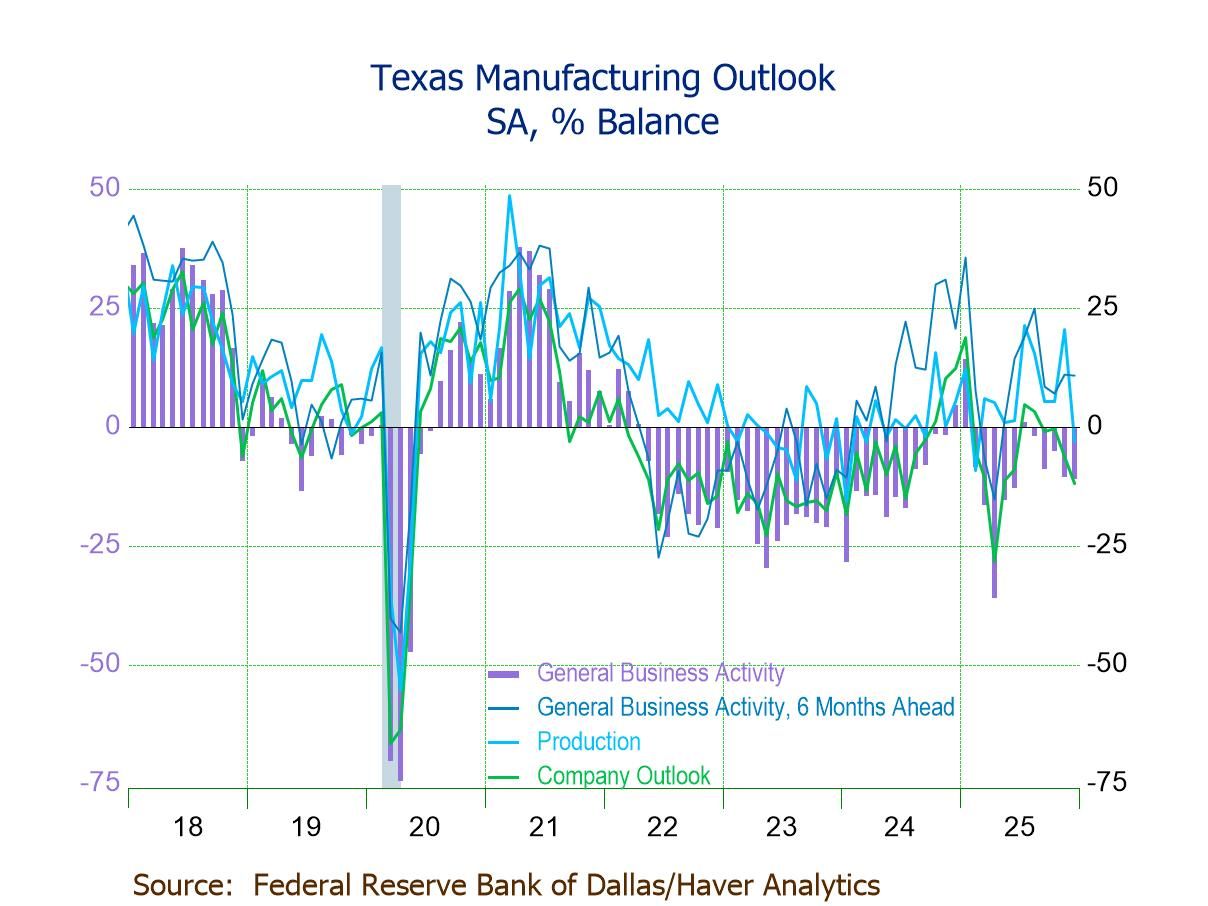Q2 U.S. GDP Growth Revised Slightly Slower
by:Sandy Batten
|in:Economy in Brief
Summary
- GDP increased 2.1% q/q (SAAR) in the second estimate vs. 2.4% in the advance.
- Downward revision to business spending on equipment was the major source.
- GDP and PCE price inflation moderated even further.
- Small decline in total corporate profits with an increase in foreign profits.


In the second estimate, real GDP grew 2.1% q/q (SAAR) in the second quarter, down from the 2.4% advance estimate, but still above most estimates of trend growth (1-3/4%-2%). The Action Economics Forecast Survey had expected no revision to real GDP growth for Q2. Slower growth in business spending on equipment was the primary factor behind the downward revision. GDP and PCE price inflation moderated even further in Q2 after the marked slowdown reported in the advance report. The first look at Q2 corporate profits showed a small overall decline with a rise in foreign profits almost offsetting a decline in domestic profits.
Private-sector domestic demand continued to be the driving force behind production in Q2, accounting for 86% of the increase in overall GDP. Real final sales to domestic purchasers were revised down to a 2.1% gain from 2.3% initially. Real personal consumption expenditures were revised up marginally to a 1.7% increase from the initially reported 1.6%. This reflected no revision to spending on durable goods and a downward revision to spending on nondurable goods that was slightly more than offset by an upward revision to spending on services. Fixed investment growth was revised down to 3.9% from 4.9%. This reflected a much stronger increase in spending on nonresidential structures and less weakness in spending on residential structures but weaker business spending on equipment and intellectual property.
Business inventories in the second estimate fell slightly in contrast to a small rise in the advance report. Consequently, the change in inventories subtracted 0.09%-point in the second estimate after having contributed 0.14%-point in the advance estimate. Also, the trade deficit widened a little more than initially estimated, increasing its subtraction from growth to -0.22%-point from -0.12%-point in the advance report. Government spending growth was revised up to 3.3% from 2.6% initially, led by a significant upward revision to spending by state and local governments to 4.7%, its fastest pace since before the pandemic.


The first look at corporate profits showed a 0.4% q/q (not annualized) decline in before-tax profits with inventory and capital consumption adjustments in Q2 following a 4.1% quarterly decline in Q1. This was the fourth consecutive quarterly decline. Domestic profits declined for the third consecutive quarter, falling 1.3% after a 4.5% drop in Q1. By contrast, foreign profits rebounded in Q2, advancing 4.4% after a 2.0% quarterly decline in Q1.
The news on inflation improved further in the second estimate. The advance report had delivered a much larger-than-expected decline in inflation as measured by both the GDP and the PCE price indexes. This was revised down even further in the second estimate. GDP price inflation, which had fallen to 2.2% from 4.1% in the advance report, was revised to 2.0%, its lowest since Q2 2020. And there has been more than falling food and energy prices at work. The rise in the GDP price index excluding food and energy prices was revised down to 2.6% in Q2 from 2.9% in the advance report and 4.8% in Q1. Similarly, PCE price inflation (the one on which the Federal Reserve focuses), which had slowed to 2.6% from 4.1% in the advance report, was revised down a notch to 2.5%.
The GDP data can be found in Haver’s USECON and USNA databases. USNA contains virtually all of the Bureau of Economic Analysis detail in the national accounts. The Action Economics consensus estimates can be found in AS1REPNA.


Sandy Batten
AuthorMore in Author Profile »Sandy Batten has more than 30 years of experience analyzing industrial economies and financial markets and a wide range of experience across the financial services sector, government, and academia. Before joining Haver Analytics, Sandy was a Vice President and Senior Economist at Citibank; Senior Credit Market Analyst at CDC Investment Management, Managing Director at Bear Stearns, and Executive Director at JPMorgan. In 2008, Sandy was named the most accurate US forecaster by the National Association for Business Economics. He is a member of the New York Forecasters Club, NABE, and the American Economic Association. Prior to his time in the financial services sector, Sandy was a Research Officer at the Federal Reserve Bank of St. Louis, Senior Staff Economist on the President’s Council of Economic Advisors, Deputy Assistant Secretary for Economic Policy at the US Treasury, and Economist at the International Monetary Fund. Sandy has taught economics at St. Louis University, Denison University, and Muskingun College. He has published numerous peer-reviewed articles in a wide range of academic publications. He has a B.A. in economics from the University of Richmond and a M.A. and Ph.D. in economics from The Ohio State University.






